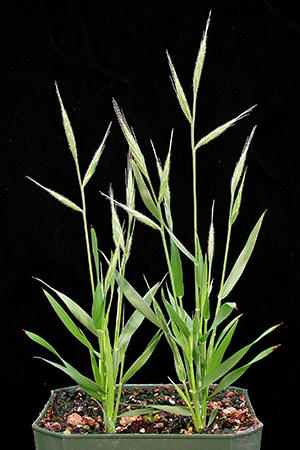Could microbes hold the answer to rising soil salinity?
Posted on July 29, 2019 by Gareth Raynes
With global soil salinity levels rising, could bacteria hold the answer to stronger plants? Gareth Raynes (@FrndlyBacteria) is a PhD student at Aberystwyth University, UK. At the Early Career Microbiologists' Forum Summer Conference which took place in June, Gareth presented a poster titled 'Exploring Coastal Plants as a Source of Plant Growth Promoting Endophytic Bacteria’. Here, he discusses his research in greater detail, and what he has learned now that he’s nearing the end of his PhD:
The human microbiome is becoming more and more widely known about; it’s in the news, on TV and products from foods to skincare claim to impact upon it. But humans aren’t alone in having microbiomes, nor are animals. Plants have really interesting associations with microbes too, which is what my PhD project has been exploring; what are these plant-associated microbes and how can we use them?
As a species we rely heavily on plants, but as climate change continues to have an increased impact, and soil salinity continues to increase worldwide, crops will begin to fail. But what if there are bacteria that can help solve this? Some plant growth promoting bacteria have been found and are already being used, including nitrogen-fixing bacteria like Herbaspirillum used in sugarcane in Brazil, but we’ve barely scratched the surface of what’s out there. Plant microbiomes have more variability than human microbiomes, and different species, habitats, soils and growth conditions impact upon the microbes present on and within a plant.

For my project, I went out to coastal paths on the west coast of Wales and collected plants thriving in the saline conditions. I isolated endophytic bacteria from within the plant tissues and set out to screen them for plant growth promotion. Because these bacteria came from within plants growing happily in coastal soils, I wanted to see if they could improve the growth of Brachypodium distachyon, a model grass species, when subjected to salt stress. I also screened them in vitro to put their own salt tolerances to the test, to explore the relationship between the two factors. I was lucky enough to be able to use the National Plant Phenomics Centre for the in planta screen, which has a really fancy setup for plants where they’re all grown on conveyor belts so the plants can be automatically weighed, imaged and watered every day.

Brachypodium distachyon
I inoculated seeds with my isolates and then applied salt stress, measuring the effect upon the plants over their life cycle. Using this approach, I’ve identified some potentially new plant growth promoters, which we’re doing some further testing on now. Hopefully in the future these approaches will be used to screen large numbers of isolates to identify and investigate more and more aspects of plant growth-promoting bacteria. I’ve also been doing some biochemistry, looking at the different bioactive compounds the isolates have been producing, which has already yielded some really interesting results. Doing such a multidisciplinary project has been quite challenging but has been really interesting too. I’ve learnt a lot of different techniques through dabbling in the different fields, and I’ve grown in confidence by showing myself that I’m not just a bacteria jockey; I can do well with other things too!
It’s not just plant-beneficial bacteria that interest me though. I’ve always been interested in using microbes for beneficial uses. When I was an undergraduate, I took a year out in industry, working on screening thermophilic bacteria for potential ethanol production from sugarcane waste products for biofuel uses. From renewable fuels to crop yield increases, to potential benefits for mental health and production of novel medicines, the idea of using microbes for really positive purposes really excites me. I think it’s a great time to be working with beneficial microbes too, we’re moving into an era where the public is increasingly accepting of the fact that vastly fewer microbes do harm than do good, and that more and more research is being done into the innumerable ways that we can use them to achieve really great things.
I’m towards the end of my PhD project now but have really benefitted from my time doing it. I have grown a huge amount as a scientist and a person and have found a love of communicating science as well as performing research. I’m not sure what my next steps are yet but I’m looking forward to seeing where microbiology takes me!
